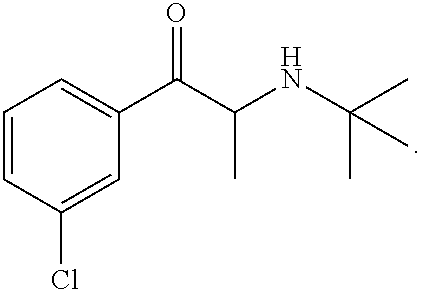Topical formulation
a technology of multiplexed molecular and enhancer, which is applied in the direction of biocide, plant growth regulator, pharmaceutical non-active ingredients, etc., can solve the problems of limited transdermal drug administration, few commercial formulations have been successfully developed, and few have been successfully developed. to achieve the effect of improving the flux of therapeutically active agents and other molecules through the skin
- Summary
- Abstract
- Description
- Claims
- Application Information
AI Technical Summary
Benefits of technology
Problems solved by technology
Method used
Image
Examples
example 1
[0259]In this Example, N-lauroyl sarcosine (NLS) and isopropyl myristate (IM) were added to the base formulation. The details of each formulation and the results of the Franz diffusion cell experiments are set out in Table 3.
[0260]With reference to Table 3, it can be seen that Formulation 2 (containing a mixture of NLS and IM each at a concentration 2.5% wt / vol.) was more effective at enhancing diclofenac sodium flux rates through the skin when compared to either of Formulation 3 (containing 5% wt. / vol NLS and no IM) or Formulation 4 (containing 5% wt. / vol IM and no NLS).
[0261]Further and surprisingly, Formulation 1 (containing a mixture of NLS and IM each at a concentration of 1.5% wt. / vol) was approximately seven times more effective at enhancing the flux rate of the diclofenac sodium when compared to Formulation 2.
example 2
[0262]In this Example, N-lauroyl sarcosine (NLS) and oleic acid (OA) were added to the base formulation. The details of each formulation and the results of the Franz diffusion cell experiments are set out in Table 4.
[0263]With reference to Table 4, it can be seen that Formulation 5 (containing a mixture of NLS and OA each at a concentration 1.5% wt / vol.) was more effective at enhancing diclofenac sodium flux rate through the skin when compared to either of Formulation 6 (containing 5% wt. / vol NLS and no OA) or Formulation 7 (containing 5% wt. / vol OA and no NLS).
[0264]It is notable that the flux rate of the NSAID in Formulation 5 was higher than that achieved by either of Formulation 6 or Formulation 7 in spite of the fact that the total concentration of the molecular penetration enhancers in Formulation 5 was lower that that in Formulation 6 and Formulation 7.
example 3
[0265]In this Example, sodium octyl sulfate (SOS) and oleic acid (OA) were added to the base formulation. The details of each formulation and the results of the Franz diffusion cell experiments are set out in Table 5.
[0266]With reference to Table 5, it can be seen that Formulation 8 (containing a mixture of SOS and OA each at a concentration 1.5% wt / vol and 3.5% wt / vol, respectively) was more effective at enhancing diclofenac sodium flux rate through the skin when compared to either of Formulation 9 (containing 5% wt. / vol OA and no SOS) or Formulation 10 (containing 5% wt. / vol SOS and no OA).
PUM
| Property | Measurement | Unit |
|---|---|---|
| surface area | aaaaa | aaaaa |
| surface area | aaaaa | aaaaa |
| surface area | aaaaa | aaaaa |
Abstract
Description
Claims
Application Information
 Login to View More
Login to View More - R&D
- Intellectual Property
- Life Sciences
- Materials
- Tech Scout
- Unparalleled Data Quality
- Higher Quality Content
- 60% Fewer Hallucinations
Browse by: Latest US Patents, China's latest patents, Technical Efficacy Thesaurus, Application Domain, Technology Topic, Popular Technical Reports.
© 2025 PatSnap. All rights reserved.Legal|Privacy policy|Modern Slavery Act Transparency Statement|Sitemap|About US| Contact US: help@patsnap.com



